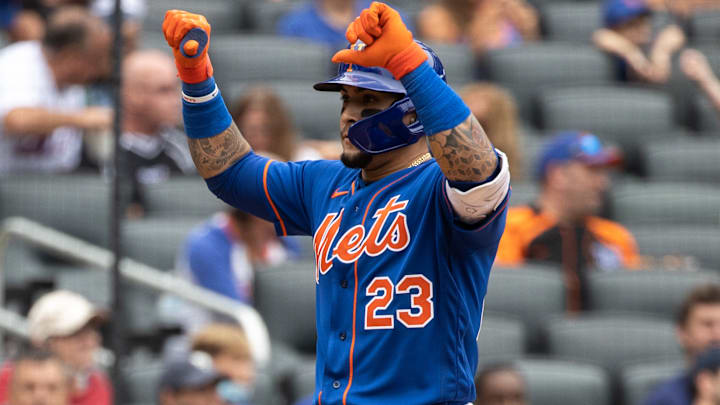4) NY Mets trade for Javier Baez was an overpayment
In one of the more recent deals, the Mets acquired infielder Javier Baez and right-handed pitcher Trevor Williams from the Chicago Cubs at the 2021 trade deadline. In exchange for this duo, the Mets sent 2020 first-round pick Pete Crow-Armstrong to Chicago. Baez was a close friend with Mets shortstop Francisco Lindor, who had lobbied hard for management to make this trade. Baez, a short stop by trade, said that he was willing to move to second base for the opportunity to play next to his friend Lindor but for no one else..
Javier Baez got off to a slow start at bat with the Mets and even had a dust up with the fans. He was unhappy with the fans who had been raining boos down on him for what they perceived as poor performance. When he did well and the fans began to cheer as fickle fans will sometimes do, Baez gave them a thumbs down. Mets owner Steve Cohan said that this behavior was unacceptable and Baez apologized. Javier Baez had the worst walk to strikeout ratio in the majors, at 0.15. He swung at and missed 21.7% of all pitches, the highest percentage in major league baseball in 2021.
The Mets offered Baez a five year, $125 million contract after the season but he decided to take a five year, $140 million contract from the Detroit Tigers. With the Mets refusing to pay the additional $15 million, essentially they gave up Pete Crow-Armstrong, their 2020 first-round pick, for 47 games of Javier Baez. Pete Crow-Armstrong was named as a 2022 MiLB Gold Glove as one of the three best defensive outfielders in the minor leagues and is considered to be the #1 prospect in the Chicago Cubs minor league system and sixth ranked outfield prospect in MLB.
Four times the Mets overpaid in trade deadline deals: Who's Next? 2023
There are times when a trade deadline deal can make a difference in the outcome of a team's season. A good example is Yoenis Cespedes, who was acquired by the Mets at the 2015 trade deadline after their original deal for Carlos Gomez fell apart. Cespedes was a major contributor to the team's march to the World Series that year.
However, more time than not, trade deadline deals don’t deliver the hoped for results. But, as the 2023 trade deadline approaches, rest assured that there will still be teams wheeling and dealing, hoping to be one of the few to catch lightning in a bottle. It’s a part of baseball history and tradition. Besides, it’s fun to dream.
After all, the sky’s the limit.
